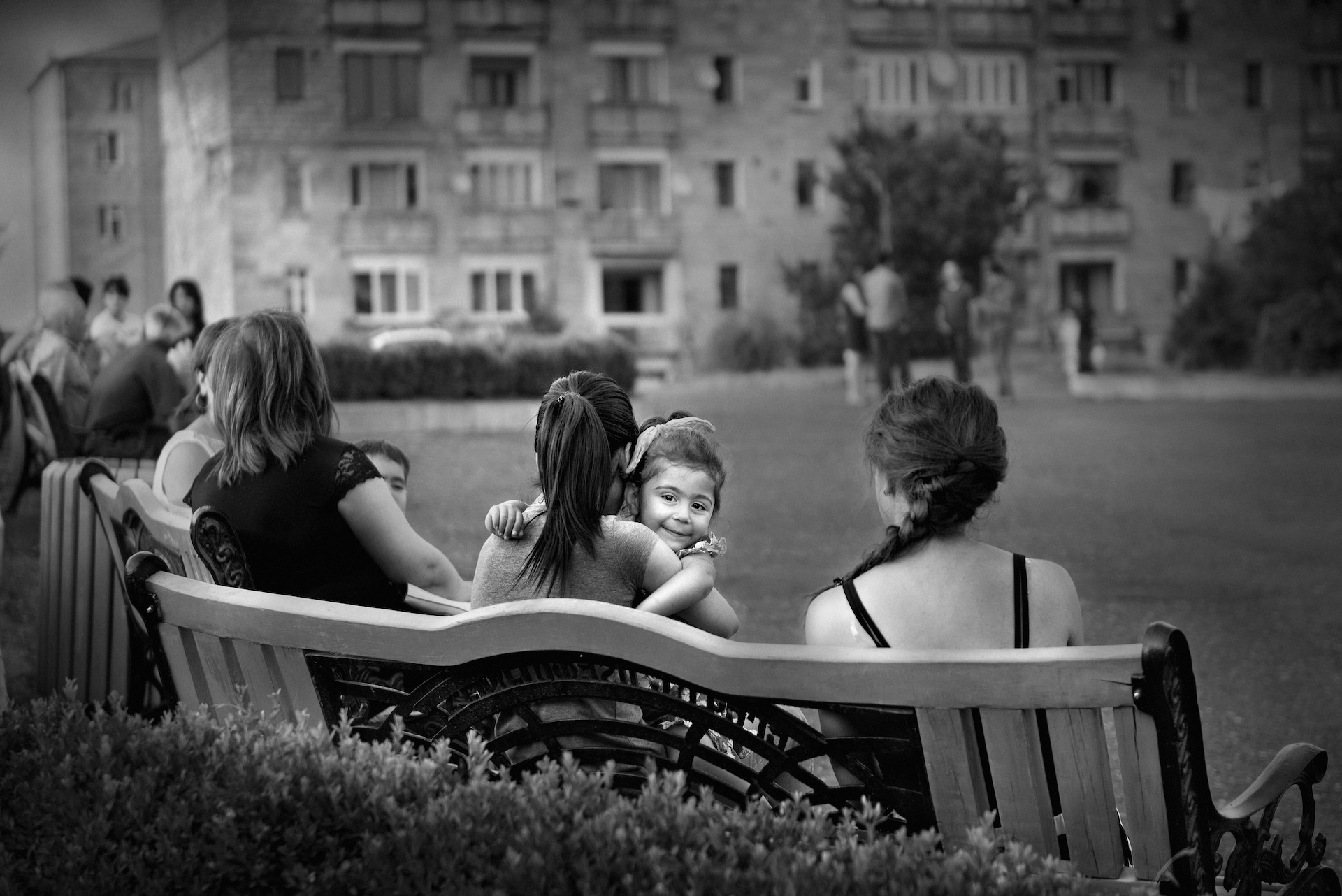
This little girl, photographed here in 2017, was barely ten years old during the Azerbaijani onslaught on Nagorno-Karabakh in 2023. More than 100,000 inhabitants fled within days, leaving behind their homes, their villages, and the graves of their parents. The journey to Armenia—on roads crowded with overloaded cars and pedestrians weakened by nine months of blockade—was nightmarish. Only after crossing the border could they finally find some relief.
The Red Cross and other organizations set up refugee camps, distributing basic necessities, while the outpouring of solidarity from the local population provided some comfort to the exhausted and desperate exiles. Donations also arrived from abroad, sent by NGOs, members of the diaspora, and some states, such as France.
After the initial shock, the Armenian government converted empty public buildings into temporary shelters, identified vacant housing for refugee families, and allocated financial aid, which they received for six months.
As for the children, UNICEF and other organizations provided pediatric consultations but, more importantly, psychological care. Medical professionals observed that many suffered from severe distress symptoms: nightmares, enuresis, bouts of inconsolable crying, withdrawal—all signs of overwhelming sadness, anxiety, fear, and anger. To help them heal, therapy programs using talking, art, and sports were implemented. And all of them were enrolled in school, anchoring their daily lives in a semblance of normality.
Yet, not all families seemed to be willing to settle permanently in Armenia. The warm welcome they received at first often gave way to indifference or even hostility from some locals. Combined with economic difficulties—in a country where rents are high and unemployment stands at 14%—this led some newcomers to leave once again. Nearly 20,000 refugees are believed to have left for Russia, which has been a destination for Armenian economic migrants for the past 30 years.
Even those who stayed were not all ready to consider a future in Armenia. A year after their exodus, barely 5,000 had applied for Armenian nationality. The vast majority of refugees rejected the government’s offer—as if refusing to give up hope of returning.